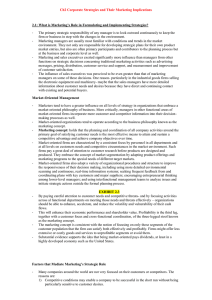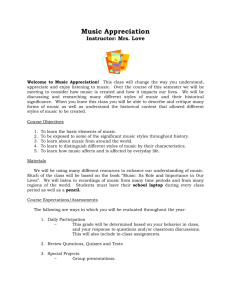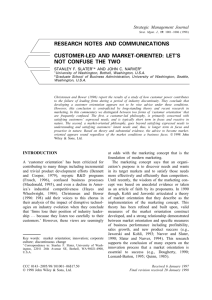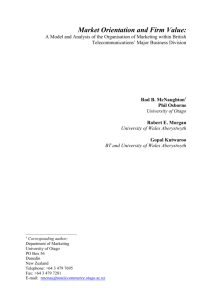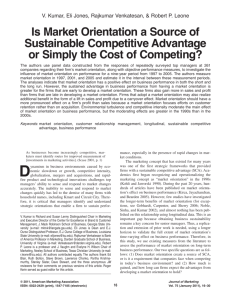Summary Brief The Management's Role in a Market
advertisement
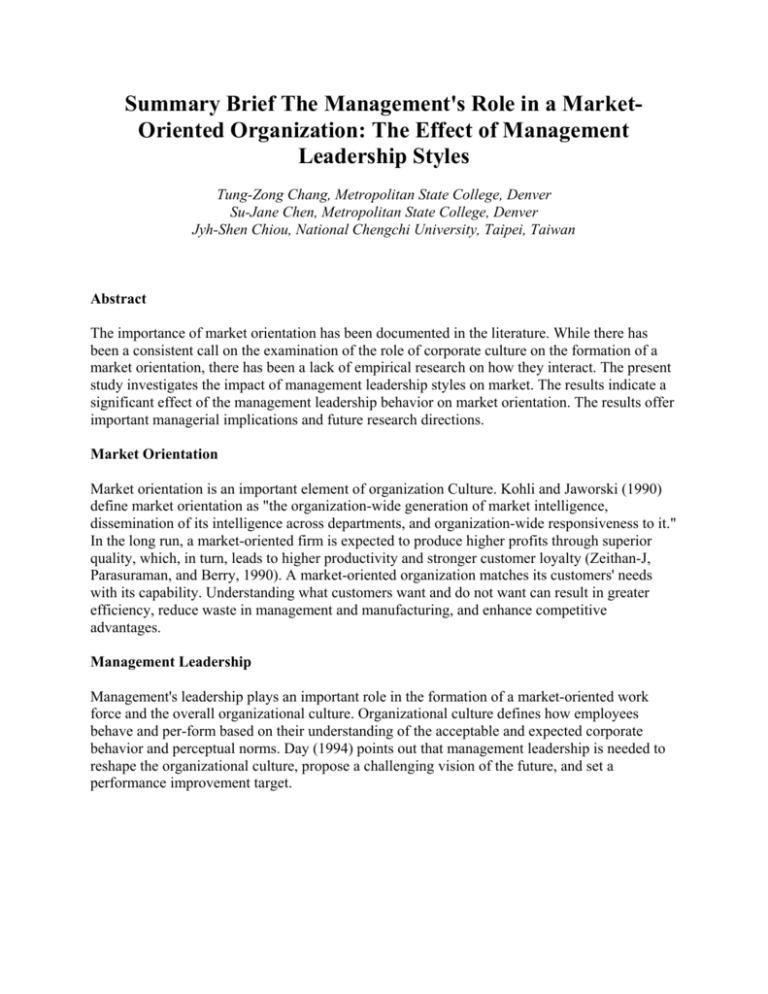
Summary Brief The Management's Role in a MarketOriented Organization: The Effect of Management Leadership Styles Tung-Zong Chang, Metropolitan State College, Denver Su-Jane Chen, Metropolitan State College, Denver Jyh-Shen Chiou, National Chengchi University, Taipei, Taiwan Abstract The importance of market orientation has been documented in the literature. While there has been a consistent call on the examination of the role of corporate culture on the formation of a market orientation, there has been a lack of empirical research on how they interact. The present study investigates the impact of management leadership styles on market. The results indicate a significant effect of the management leadership behavior on market orientation. The results offer important managerial implications and future research directions. Market Orientation Market orientation is an important element of organization Culture. Kohli and Jaworski (1990) define market orientation as "the organization-wide generation of market intelligence, dissemination of its intelligence across departments, and organization-wide responsiveness to it." In the long run, a market-oriented firm is expected to produce higher profits through superior quality, which, in turn, leads to higher productivity and stronger customer loyalty (Zeithan-J, Parasuraman, and Berry, 1990). A market-oriented organization matches its customers' needs with its capability. Understanding what customers want and do not want can result in greater efficiency, reduce waste in management and manufacturing, and enhance competitive advantages. Management Leadership Management's leadership plays an important role in the formation of a market-oriented work force and the overall organizational culture. Organizational culture defines how employees behave and per-form based on their understanding of the acceptable and expected corporate behavior and perceptual norms. Day (1994) points out that management leadership is needed to reshape the organizational culture, propose a challenging vision of the future, and set a performance improvement target. Deshpande, Farley, and Webster (1993) view leadership as a key element that shapes corporate culture, whereas Slater and Narver (1995) identify leadership as an important component of climate (defined as the operationalization of culture), which is a critical element of a learning organization. Walker and Ruekert (1987) contemplate that a centralized organization is unlikely to be innovative or quick to adapt to changing market conditions. Jaworski and Kohli (1993) stress that senior management's emphasis on market orientation is an antecedent of the firm's market orientation element. Results The effects of the four management styles were tested using multiple regression analysis. The effects of the four management leadership styles on market orientation and its two components, customer orientation and interfunctional orientation, are generally supported. However, the directive leadership style does not have a significant effect. Industry leadership and firm characteristics (technology/non-technology firms) are used as covariates in all models. Discussion The linkage between management style and market orientation is generally supported by the empirical data. Among the four management styles, only the directive style fails to exert significant effect on market orientation. This indicates that senior management plays a very important role in the formation of a market-oriented workplace. The lack of influence of the directive style on market orientation warrants close examination. While the directive style is necessary to set rules and standards for the subordinate to follow and accomplish, too much emphasis on the management's mandate and order may have negative consequences on the market orientation of a firm. A market-oriented culture needs to be nurtured by encouraging employee participation, providing adequate support, and setting clear goals. Further investigation reveals that industry leaders show a higher degree of customer orientation than market followers, though there is no significant difference in interfunctional coordination. Furthermore, respondents in technology firms believe that their firms are more market oriented than non-technology firms.



